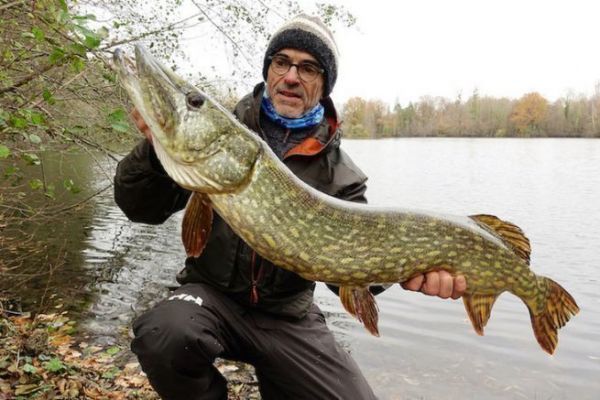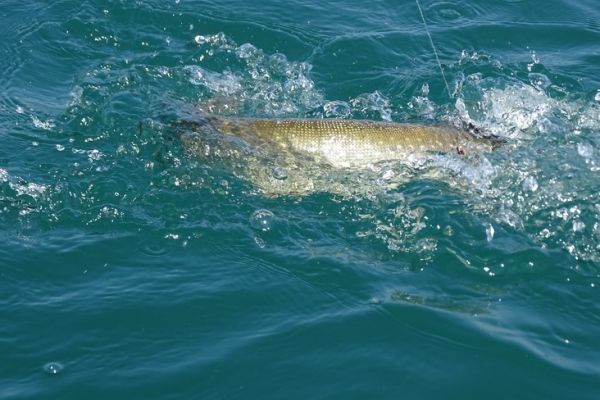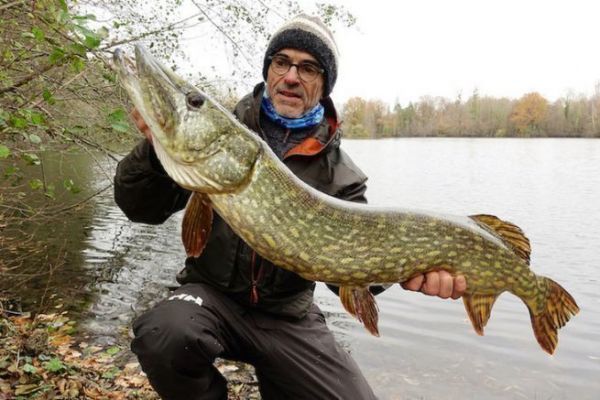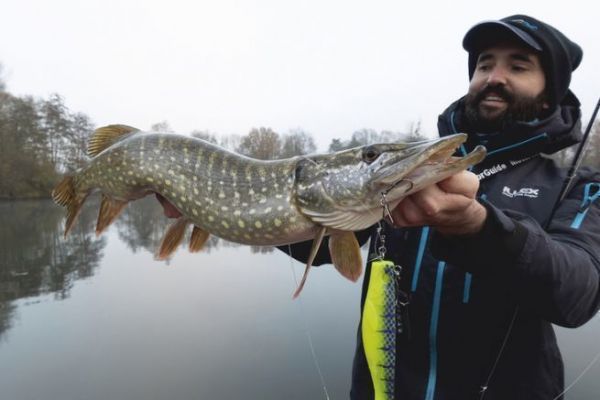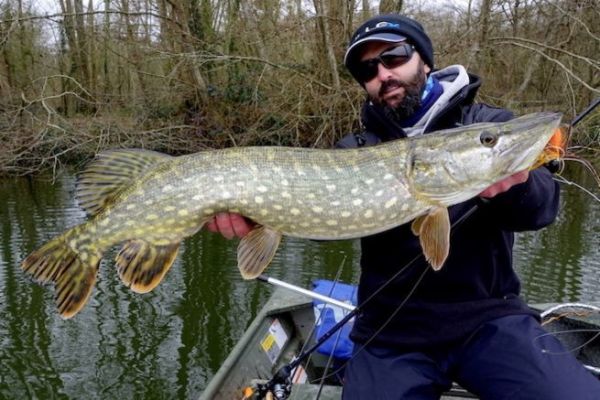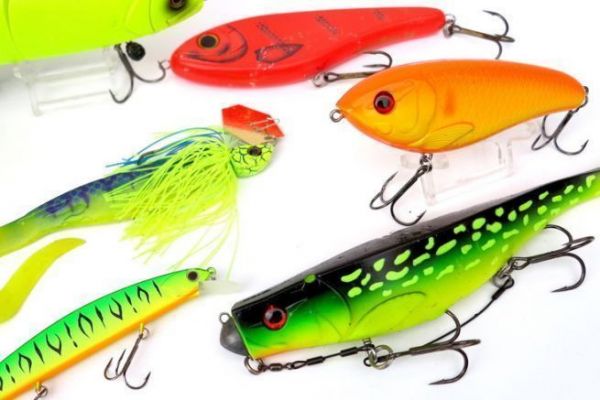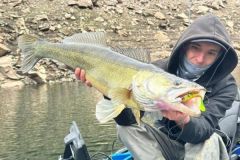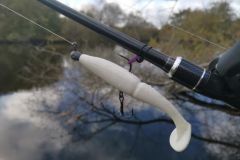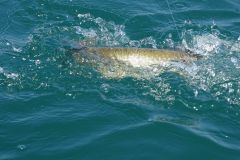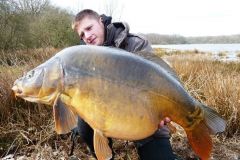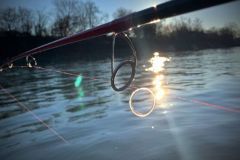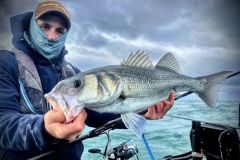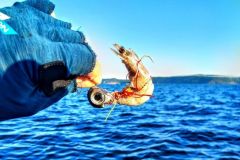Here is the first article of a report dedicated to pike fishing with lures in winter. For this first part we will focus on the use of big lures for pike fishing in winter and I will try to share with you my thoughts on the subject.
The importance of the biotope
Also, this series of articles is the fruit of my personal experience which, if it is consistent, is not exhaustive since I do not have, and could not have, the pretention to master all the French biotopes for pike fishing.
Yes, our technical approach will depend primarily on the biotope, its characteristics and its constraints (and this is without counting the mood of the fish because ultimately, they are the ones who decide). The conditions that we encounter at the water's edge are therefore innumerable and it is these conditions that will condition the use of a lure more than another and therefore the use or not of big lures in winter. In winter, we will not fish in the same way a very deep dam lake and a gravel pit or a river.
Determining the behaviour of fish, fishing deeper
The fish will above all look for thermal comfort and reach the water layers located in depth (beyond 4 m) allowing them to gain some degrees. This being said, in biotopes where the water mass is not very important (about 3-4 m), the shallower zones should not be neglected, especially between 11 am and 2 pm on sunny days. These areas are the ones where the water temperature varies the fastest, both negatively and positively!
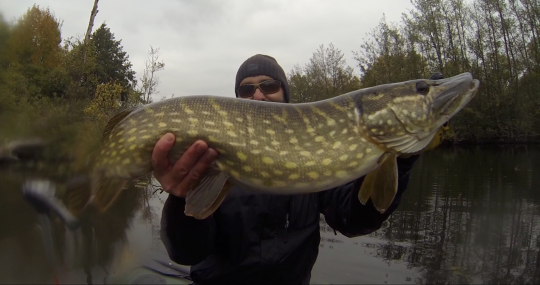
To rebound on my introduction concerning the importance of the biotope, not everyone observes a minimum depth of 4 m, many French pikes live all year long in 1.50 m of water, simply because they have no choice! As an example, and forcing the issue, if scraping the bottom is relevant, trying the topwater at the hottest (or least cold!) of the day is not totally absurd as I have experimented and validated it several times (well, it is not the most productive thing either...).
Adapt to the activity level of the fish, fish slowly
Then, the principle is to be in phase with the behavior of the fish, whether they are predators or prey. It is a question of mimicry. The forage fish are grouped in compact and not very mobile schools and the carnivorous ones hold in ambush near or even in the heart of these schools.
In winter, when the water temperature drops below 8°C, the physiology of fish changes, their metabolism, as cold-blooded animals, slows down. Digestion times are greatly extended and feeding windows are much less frequent.
The movement of carnivores will often be conditioned by the ratio of energy gain to energy spent. For this reason, the prey must be large and/or particularly easy to catch. I did say "and/or", so...
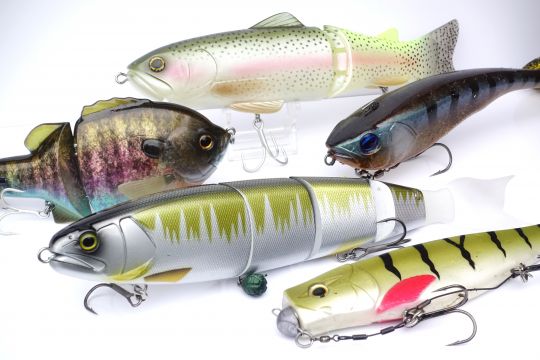
Is it necessary to fish with big lures in winter?
Let's be clear right away, no.
Even if it is admitted that it is necessary, in addition to fishing deeper and slower, to fish with bigger lures, there again it is not relevant to make generalizations. Fishing with bigger lures has a certain logic which will nevertheless show its limits depending on the constraints.
From my own experience, it would be more accurate to say that large lures should be used more regularly in winter, although it is not the right approach in all situations.
Large lures in response to several factors
Indeed, the use of large lures will respond to several factors and not only to that of the ratio of energy gain to energy spent . The use of large lures can be justified in an approach of socket selection but also for to fit the size of the prey in presence. This choice can also be motivated by the type of fished biotope .
I will more easily draw a big lure in large spaces, and that with the aim of being noticed, and privilege the use of a Rubber Jig for example, to skipper under the foliage of hollow and cluttered banks. We can also choose to fish big to meet a constraint related to the fishing pressure . In the latter case, fishing big may be necessary to trigger apathetic fish because they are too used to seeing "standard" size lures. I invite you to read an article I wrote on the subject " Pike in water: how to make the difference between fishing pressure and the other? ".
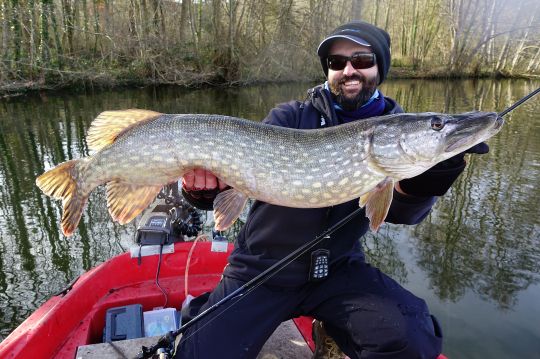
In summary
All this to say that the size of the lures is an important criterion to take into account, especially in winter, but which, to help me choose my lures in winter, will generally come in third place behind the fact of fishing deeper and more slowly. It is often the fact of being able to fish slowly that will prevail in my choices.
We will see in the rest of this report dedicated to pike fishing with lures in winter that some lures of modest size do better than the big ones in winter conditions. Clearly, in winter, use big lures but do not necessarily abuse them because if they are particularly effective in many situations, they are not a panacea.

 /
/ 